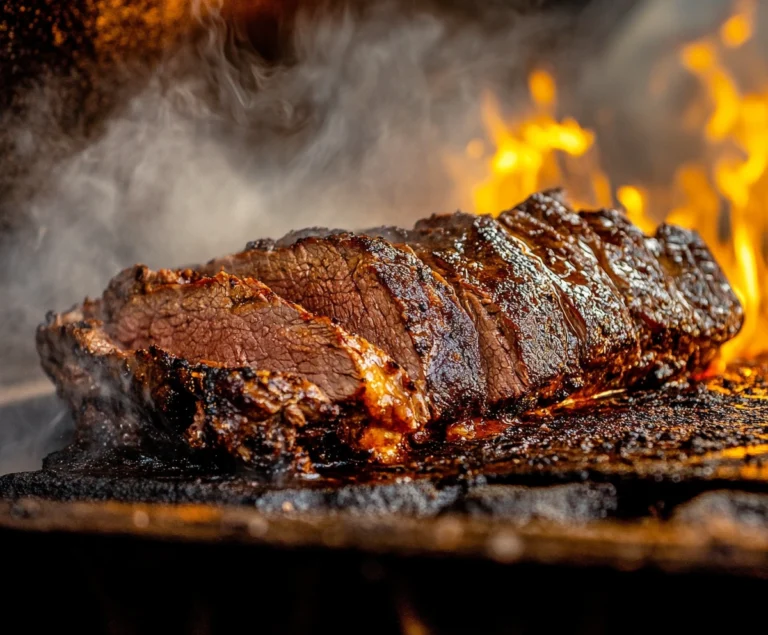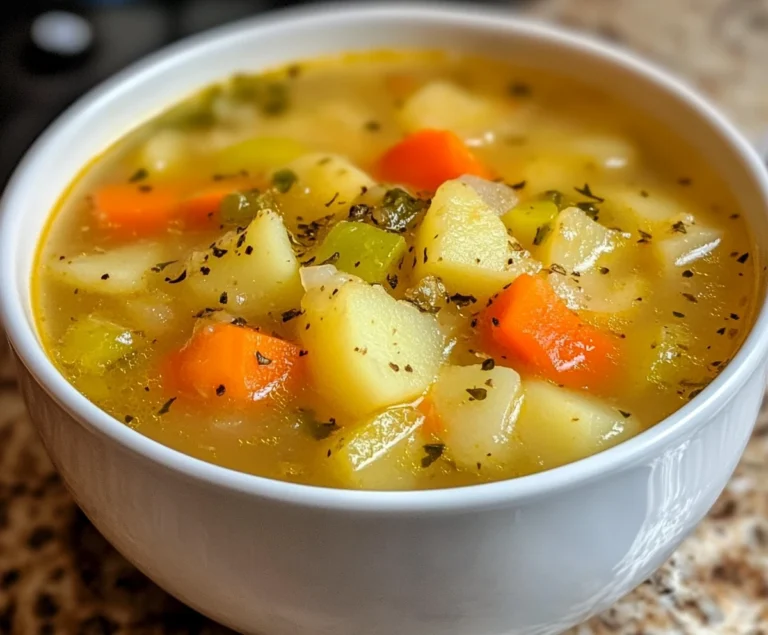Is Caesar Salad Warm or Cold?
Caesar salad is one of the most recognized dishes worldwide, beloved for its simple yet flavorful combination of romaine lettuce, Parmesan cheese, croutons, and a creamy, tangy dressing. Yet, a debate surrounds this iconic dish: should it be served warm or cold? Traditionally, Caesar salad is served cold, which preserves the freshness of its ingredients and the crispness of its romaine lettuce. However, modern culinary trends have introduced warm versions, typically with grilled proteins such as chicken, steak, or salmon, to create a heartier meal.
This article will delve deeply into the origins of Caesar salad, its traditional ingredients, and the evolution of warm versions. We’ll also explore the pros and cons of each preparation method, debunk common misconceptions, and provide recipes for both cold and warm Caesar salads. By the end, you’ll have a thorough understanding of how and when to enjoy each variation.
Explore more about the origins of Caesar salad and its global rise.
The Origins and History of Caesar Salad
Caesar Salad: A Mexican Creation with Italian Roots
Contrary to what many believe, Caesar salad was not invented in Italy. Instead, it was created by an Italian-American chef named Caesar Cardini in the 1920s in Tijuana, Mexico. Cardini had moved from the United States to Mexico to escape Prohibition laws, which severely limited alcohol sales and drove restaurateurs to Mexico where they could serve alcoholic beverages legally.
The creation of Caesar salad came about, as legend has it, somewhat by accident. One day, during a particularly busy service at Cardini’s restaurant, the kitchen was running low on ingredients. To satisfy his hungry guests, Cardini improvised a salad using the ingredients he had on hand: romaine lettuce, Parmesan cheese, croutons, olive oil, egg yolks, lemon juice, Worcestershire sauce, and garlic. The salad was a hit, and its simplicity and bold flavors quickly gained widespread popularity.
The key to the success of this dish lay not just in the ingredients but also in its tableside preparation. Cardini himself would toss the salad in front of his guests, creating an air of exclusivity and freshness. This presentation added to the allure of the salad, which soon became a signature dish at his restaurant and beyond.
The original recipe did not include anchovies, a common ingredient in today’s Caesar salads. Instead, the briny, umami flavor that anchovies provide came from Worcestershire sauce. Over time, variations of the salad began to emerge, incorporating anchovies directly into the dressing, which became a hallmark of modern Caesar salad recipes.
For more on authentic Caesar salad recipes, visit Bon Appétit.
The Global Spread and Variations of Caesar Salad
As the fame of Caesar salad spread, so did the creativity of chefs and home cooks worldwide. Its versatility and ease of preparation made it adaptable to different cultures and preferences. Soon, restaurants around the globe began offering their own versions, often tailored to local tastes and ingredient availability.
In the United States, Caesar salad became a staple in restaurants, both casual and fine dining. Many chefs began to innovate by adding grilled proteins such as chicken, steak, or shrimp, transforming the salad from a simple starter into a hearty meal. Anchovies were also integrated into the dressing, giving it a saltier, fishier punch.
Meanwhile, in European countries like Italy and France, variations emerged that included local ingredients such as pancetta or bacon, offering a smoky contrast to the salad’s fresh, crisp elements. In parts of Asia, chefs introduced elements such as crispy noodles or sesame seeds for an extra crunch, while in South America, versions of Caesar salad featured local cheeses and even fruit.
In each of these regions, the salad took on a unique identity while staying true to its core concept: a simple yet delicious blend of romaine lettuce, Parmesan cheese, croutons, and a zesty dressing. Its global popularity shows how a dish that began as a last-minute improvisation became a canvas for culinary experimentation.
The Great Debate: Warm vs. Cold Caesar Salad
Why Caesar Salad Is Traditionally Served Cold
Most traditional Caesar salads are served cold, following the recipe that Caesar Cardini first developed. This cold preparation is essential for maintaining the integrity of the ingredients, particularly the romaine lettuce, which is known for its crisp texture and refreshing bite.
Check out Healthline’s guide for nutritional information on Caesar salad and its health benefits.
Preserving Texture and Freshness
The primary reason chefs serve Caesar salad cold is to preserve the texture of the romaine lettuce. When served cold, romaine lettuce retains its crisp texture, which contrasts beautifully with the creaminess of the dressing and the crunch of the croutons. If the lettuce were to be served warm, it would wilt, losing much of its refreshing appeal.
Romaine lettuce, which is rich in water, wilts easily under heat. The cold temperature ensures that the lettuce stays firm and crisp, creating that satisfying crunch in every bite. This is crucial because texture is a key component of Caesar salad; the crunchy lettuce, paired with crunchy croutons and smooth dressing, is what gives the salad its distinct mouthfeel.
Enhancing Flavor
Serving Caesar salad cold also enhances the flavors of the dressing and other ingredients. The cold temperature helps to keep the dressing thick and creamy, ensuring that it coats the lettuce evenly without becoming too runny. The lemon juice and garlic in the dressing maintain their sharp, tangy flavors when cold, which could become muted or overly aggressive when served warm.
Additionally, cold temperatures help preserve the balance of flavors in the salad. The salty, umami-rich Parmesan cheese contrasts well with the cold, crisp lettuce, while the garlic and lemon juice in the dressing cut through the richness, providing a bright, fresh flavor.
Adhering to Tradition
Finally, tradition plays a significant role in why Caesar salad is typically served cold. Caesar Cardini designed the salad to be served cold, and many chefs adhere to this traditional preparation out of respect for the dish’s origins. The classic cold Caesar salad is seen as a homage to its creator, preserving the essence of the dish as it was originally intended.
The Rise of Warm Caesar Salad
In recent decades, the culinary world has embraced innovation, and Caesar salad is no exception. Warm Caesar salads, often featuring grilled proteins such as chicken, steak, or salmon, have become increasingly popular. These warm versions maintain the classic ingredients of Caesar salad but add a new dimension with the contrast between warm and cold elements.
The Appeal of Warm Proteins
One of the main reasons for the rise in popularity of warm Caesar salad is the addition of grilled proteins. Grilled chicken, in particular, has become a staple in Caesar salads, turning the dish from a light appetizer into a filling, protein-packed meal. The warm chicken adds a savory depth to the salad while complementing the tangy dressing and crispy lettuce.
Other proteins, such as grilled steak and salmon, have also become popular additions. These ingredients offer a richer, heartier flavor that pairs well with the lighter elements of the salad. The contrast between the warm, juicy steak or salmon and the cold lettuce creates a unique dining experience that many people enjoy.
Warm Caesar Salad as a Meal
Warm Caesar salads are often served as main courses in restaurants, providing a more substantial option than the traditional cold version. By adding grilled proteins and sometimes additional ingredients such as roasted vegetables, chefs transform the Caesar salad into a complete, satisfying meal.
These variations cater to diners who want a heartier dish without sacrificing the classic flavors of Caesar salad. The balance between the warm, savory proteins and the cold, fresh lettuce creates a dynamic eating experience that appeals to a wide range of palates.
Ingredients: The Core Components of Caesar Salad
Whether served warm or cold, Caesar salad relies on a few key ingredients to create its distinctive flavor and texture. However, the way these ingredients are prepared and presented can vary significantly depending on the version of the salad.
Core Ingredients in a Classic Caesar Salad
- Romaine Lettuce: The foundation of the salad, romaine lettuce provides the crisp texture that defines a classic Caesar salad. Its sturdy leaves hold up well under the weight of the creamy dressing, and its mild flavor allows the other ingredients to shine.
- Parmesan Cheese: Parmesan adds a salty, umami-rich flavor that complements the tangy dressing. Finely grated Parmesan is often tossed with the lettuce, while shaved Parmesan may be used as a garnish.
- Croutons: Traditionally made from toasted bread cubes, croutons add a crunchy texture to the salad. They are typically seasoned with garlic and olive oil, enhancing the flavor of the salad.
- Caesar Dressing: The dressing is perhaps the most important component of Caesar salad. A traditional Caesar dressing is made with egg yolks, olive oil, lemon juice, garlic, Worcestershire sauce, Dijon mustard, and Parmesan cheese. The result is a creamy, tangy dressing that coats the lettuce evenly and provides a rich flavor.
- Lemon Juice: Fresh lemon juice is a crucial ingredient in Caesar dressing, providing the acidity that balances the richness of the egg yolks and olive oil.
- Garlic: Garlic is another essential component of the dressing, adding a bold, savory flavor that elevates the other ingredients.
Common Additions in Warm Caesar Salads
In addition to the core ingredients, warm Caesar salads often feature grilled proteins and other warm elements to create a more substantial meal.
- Grilled Chicken: Grilled chicken is the most common protein added to Caesar salad. The warm, juicy chicken provides a savory contrast to the cold lettuce and dressing, making the salad more filling.
- Steak: For a heartier meal, some chefs add grilled steak to Caesar salad. The rich, beefy flavor of the steak pairs well with the tangy dressing and crisp lettuce, creating a more substantial dish.
- Salmon: Grilled salmon is another popular addition to warm Caesar salads. The tender, flaky fish adds a richness that complements the lighter elements of the salad, such as the romaine lettuce and lemony dressing.
- Roasted Vegetables: In some variations of warm Caesar salad, chefs add roasted vegetables such as tomatoes or bell peppers. These vegetables provide additional flavor and texture, enhancing the overall dining experience.
How to Make Caesar Salad at Home: Cold and Warm Versions
Making Caesar salad at home is a rewarding experience, whether you prefer the traditional cold version or want to experiment with a warm twist. Below are step-by-step guides for preparing both versions of Caesar salad.
How to Make a Classic Cold Caesar Salad
Ingredients:
- 1 large head of romaine lettuce, chopped
- 1/2 cup freshly grated Parmesan cheese
- 1 cup croutons
- 2 cloves garlic, minced
- 2 egg yolks
- 1 teaspoon Dijon mustard
- 1 tablespoon Worcestershire sauce
- Juice of 1 lemon
- 1/2 cup olive oil
- Salt and pepper to taste
Instructions:
- Prepare the Dressing: In a medium bowl, whisk together the egg yolks, Dijon mustard, Worcestershire sauce, lemon juice, and minced garlic. Slowly drizzle in the olive oil while continuing to whisk until the dressing thickens and becomes creamy. Add salt and pepper to taste.
- Chop the Lettuce: Wash and dry the romaine lettuce, then chop it into bite-sized pieces. Place the lettuce in a large salad bowl.
- Toss the Salad: Drizzle the dressing over the lettuce and toss to coat. Add the grated Parmesan cheese and croutons, then toss again to combine.
- Serve: Plate the salad and garnish with extra Parmesan cheese and freshly ground black pepper if desired. Serve immediately to preserve the crispness of the lettuce.
How to Make a Warm Caesar Salad
Ingredients:
- 1 large head of romaine lettuce, chopped
- 2 grilled chicken breasts, sliced (or steak, salmon, etc.)
- 1/2 cup freshly grated Parmesan cheese
- 1 cup croutons
- 2 cloves garlic, minced
- 2 egg yolks
- 1 teaspoon Dijon mustard
- 1 tablespoon Worcestershire sauce
- Juice of 1 lemon
- 1/2 cup olive oil
- Salt and pepper to taste
Instructions:
- Prepare the Dressing: In a medium bowl, whisk together the egg yolks, Dijon mustard, Worcestershire sauce, lemon juice, and minced garlic. Slowly drizzle in the olive oil while whisking to create a thick, creamy dressing. Add salt and pepper to taste.
- Grill the Protein: Season the chicken breasts, steak, or salmon with salt, pepper, and herbs. Grill over medium-high heat until cooked through (about 6-8 minutes per side for chicken, depending on thickness). Let the protein rest for a few minutes before slicing.
- Chop the Lettuce: Wash and dry the romaine lettuce, then chop it into bite-sized pieces. Place the lettuce in a large salad bowl.
- Toss the Salad: Drizzle the dressing over the lettuce and toss to coat. Add the grated Parmesan and croutons, then toss again to combine.
- Top with Protein: Place the sliced grilled chicken (or steak, salmon, etc.) on top of the salad.
- Serve: Garnish with extra Parmesan cheese and freshly ground black pepper, and serve immediately while the protein is still warm.
Nutritional Considerations: Warm vs. Cold Caesar Salad
Caesar salad, whether served warm or cold, can be a nutritional powerhouse or a calorie-heavy indulgence, depending on how it’s prepared. Let’s break down the nutritional aspects of both versions.
Cold Caesar Salad Nutrition
A traditional Caesar salad made with romaine lettuce, Parmesan cheese, croutons, and dressing is relatively low in calories but high in fat due to the olive oil and egg yolks in the dressing. However, these fats are primarily heart-healthy monounsaturated fats from the olive oil.
Nutritional Highlights:
- Low in carbohydrates: The salad is low in carbs, making it suitable for low-carb or ketogenic diets, especially if you skip the croutons.
- Rich in healthy fats: The olive oil-based dressing provides heart-healthy fats that can aid in nutrient absorption and promote cardiovascular health.
- Protein: Though the classic salad doesn’t include meat, the addition of anchovies or eggs in the dressing adds a small amount of protein.
- Micronutrients: Romaine lettuce is a good source of vitamins A, C, and K, as well as folate and potassium.
Warm Caesar Salad Nutrition
When you add grilled chicken, steak, or salmon to Caesar salad, the protein content increases significantly, making the salad a more filling and complete meal. However, the additional protein can also increase the calorie count.
Nutritional Highlights:
- High in protein: The addition of grilled chicken, steak, or salmon boosts the protein content, making it a great post-workout meal or a filling lunch.
- Healthy fats: Grilled salmon, in particular, is rich in omega-3 fatty acids, which promote brain health and reduce inflammation.
- Caloric content: Adding protein and extra dressing can increase the calorie count, so be mindful of portion sizes if you’re watching your calorie intake.
- Complete meal: Warm Caesar salads with protein can be a nutritionally complete meal, offering a balance of macronutrients (protein, fat, and carbohydrates) as well as essential vitamins and minerals.
Common Misconceptions About Caesar Salad
There are several misconceptions about Caesar salad, particularly regarding how it should be served and what ingredients should be included. Let’s debunk some of the most common myths.
1. Anchovies Are a Must-Have Ingredient
While many modern recipes for Caesar salad dressing include anchovies, the original recipe created by Caesar Cardini did not. Instead, Cardini used Worcestershire sauce to provide the salty, umami flavor that anchovies typically offer. While anchovies have become a popular addition, they are not a required ingredient for a true Caesar salad.
2. Caesar Salad Should Always Be Served Cold
Although Caesar salad is traditionally served cold, modern variations that incorporate grilled proteins such as chicken, steak, or salmon have become increasingly popular. These warm Caesar salads offer a unique contrast between cold and warm elements and have gained favor among those who prefer a heartier meal.
3. Caesar Dressing Must Always Be Creamy
Not all Caesar dressings are creamy. Some lighter versions feature a vinaigrette-style dressing made with olive oil, lemon juice, garlic, and anchovies, with no egg yolks or cream to thicken it. This lighter dressing provides the same tangy flavor but with a thinner consistency, offering a refreshing alternative to the traditional creamy dressing.
Frequently Asked Questions (FAQs)
Is Caesar Salad Traditionally Served Hot or Cold?
Traditionally, Caesar salad is served cold to preserve the crisp texture of the romaine lettuce and the freshness of the dressing. However, many modern variations include warm ingredients such as grilled chicken, steak, or salmon.
Can You Serve Caesar Salad with Warm Chicken?
Yes, grilled chicken is a common addition to Caesar salad and is often served warm. The contrast between the warm chicken and the cold lettuce creates a satisfying balance of flavors and textures.
What Type of Salad Is Typically Served Warm?
Several salads are commonly served warm, such as warm spinach salads with bacon or roasted vegetables. Warm salads often feature heartier ingredients and are popular in colder months.
Is It Safe to Use Raw Egg Yolks in Caesar Dressing?
Traditional Caesar dressing contains raw egg yolks, which provide a creamy texture. To reduce the risk of foodborne illness, use pasteurized eggs or opt for a mayonnaise-based dressing if you prefer to avoid raw eggs.
Conclusion: The Best of Both Worlds
Whether you prefer a cold Caesar salad for its refreshing crunch or enjoy the warmth of grilled chicken or







